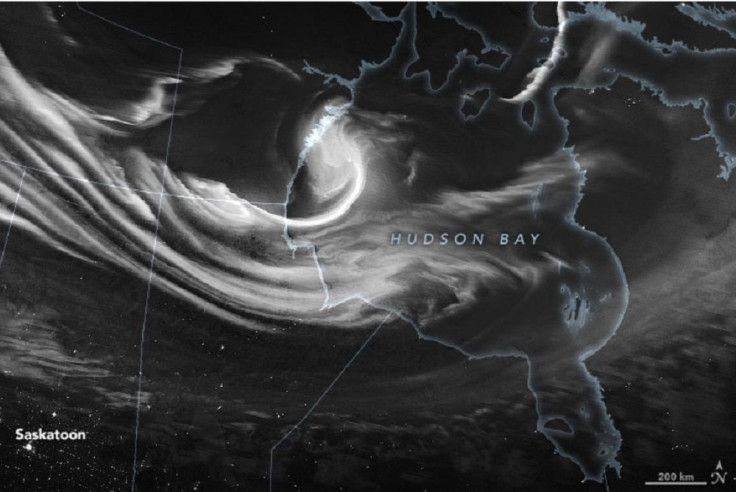Satellite Captures Aurora Borealis Over Hudson Bay [Photo]
KEY POINTS
- The Suomi NPP satellite caught a glimpse of the aurora borealis
- Experts forecast Solar Cycle 25's peak activity would be by mid-2025
- There could be more opportunities to spot auroras
A satellite has captured waves of dancing lights or aurora borealis over Hudson Bay. NASA says the phenomenon is a reminder of how the Earth is still absorbing energy from the sun even on the night side of the planet.
A recent geomagnetic storm caused the aurora borealis or northern lights to be visible for several nights over North America and Northern Europe, NASA Earth Observatory noted. Apart from skywatchers who got to witness the special sight, the Suomi NPP satellite also caught a glimpse of the phenomenon.
In an image shared by the agency, which was captured by the Visible Infrared Imaging Radiometer Suite (VIIRS) instrument on the satellite, one can see the signature swirling lights of the aurora borealis over Hudson Bay and central Canada on Feb. 4.

Both the aurora borealis and its southern counterpart, the aurora australis, happen when solar particles collide with the Earth's atmosphere and excite the nitrogen and oxygen particles. They then produce the lights that appear to be dancing in the sky.
According to NASA, when people see the glowing aurora, they are actually seeing "a billion individual collisions" that are lighting up the Earth's magnetic field lines.
During solar cycles, which run for approximately 11 years, the sun builds to a maximum then "settles back down" before the beginning of another cycle. Active regions tend to be small during the solar minimum and fewer solar flares are detected during this period. But this increases as the sun reaches the solar maximum, or when it reaches peak activity.
Coronal mass ejections (CME) occur more often close to the peak of the solar cycle. And when the Earth is in the path of the CME, this affects space weather and causes the northern and southern lights.
In the case of the current Solar Cycle 25, it has been forecasted that the sun will reach the solar maximum by mid-2025, NASA Earth Observatory noted. This could mean that there may be more opportunities to view auroras.
This is an opportunity for citizen scientists to contribute to scientific studies on the phenomenon. One way to do this is through the citizen science program, called Aurorasaurus, which allows people to help track auroras around the world.
© Copyright IBTimes 2024. All rights reserved.






















